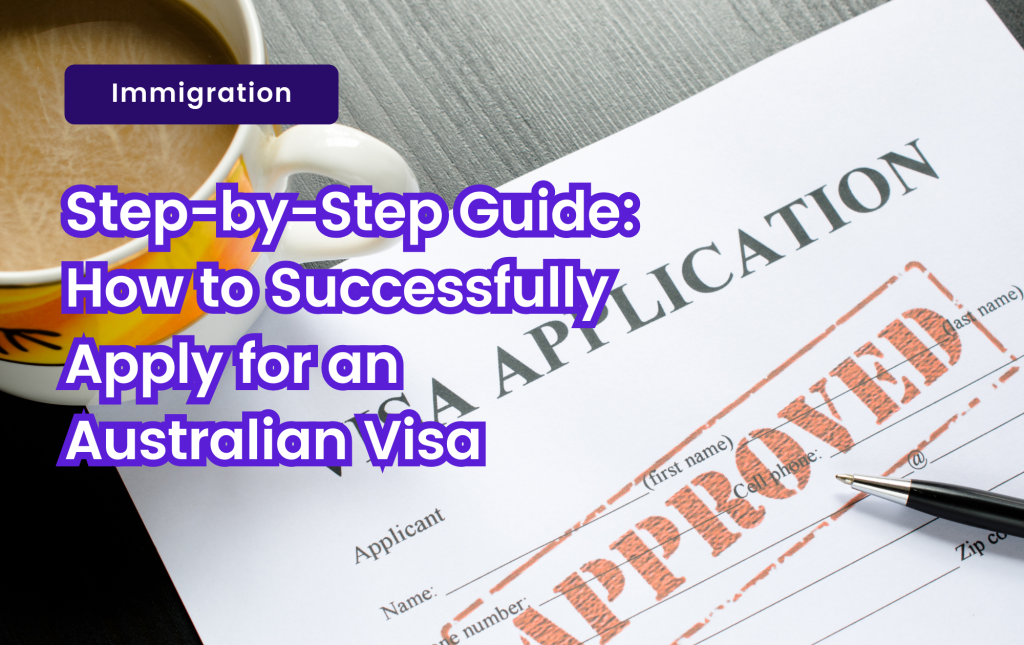
The first step to your Australian adventure is securing an Australian visa. It might seem overwhelming, but don’t worry! We’re here to guide you through the entire Australian visa application process, step-by-step.
Whether you’re planning a vacation, studying, working, or starting a new life in Australia, this comprehensive guide will equip you with the knowledge and tools to successfully apply for your Australian visa.
Let’s embark on this journey together and turn your Australian dream into a reality!
The first step in your Australian visa journey is figuring out why you’re heading Down Under. Australia offers a variety of visas to cater to different purposes. Understanding your reason for visiting will help you determine the correct visa subclass to apply for.
Here are some common reasons for visiting Australia and their corresponding visa types:
Remember, this is just a general overview. The specific visa requirements and eligibility criteria can vary depending on your individual circumstances. It’s essential to check the official Department of Home Affairs website for the most accurate and up-to-date information.
By clearly defining your purpose of visit, you’ll be able to narrow down your visa options and focus your application efforts accordingly.
Once you’ve determined your purpose for visiting Australia, it’s time to delve deeper into the specific visa subclass that aligns with your plans. Each visa subclass has its own set of eligibility criteria, documents, and application processes.
Let’s break it down:
By thoroughly researching and understanding the visa subclass requirements, you’ll increase your chances of a successful Australian visa application. Remember, it’s always better to be over-prepared than underprepared.
If you’re unsure about which visa subclass is right for you, consider using the Department of Home Affairs’ Visa Finder tool to get personalized guidance.
Collecting the right documents is crucial for a smooth Australian visa application process. The specific documents you’ll need will depend on the visa subclass you’re applying for. However, there are some common documents required for most visa types.
Demonstrating your financial capability is essential for many Australian visa applications. The required financial evidence varies based on the visa subclass and your personal circumstances.
Here are some common ways to prove your financial capacity:
Australia places importance on the health and character of its visa applicants. Depending on the visa subclass, you might need to undergo a health examination and provide a police certificate.
By diligently gathering all the required documents, proving your financial capacity, and meeting health and character requirements, you’ll significantly increase your chances of a successful Australian visa application.
Remember, it’s essential to provide accurate and complete documentation to avoid delays or refusals.
With your documents in order, it’s time to tackle the online Australian visa application form. The Department of Home Affairs has an online system called ImmiAccount where you can create a profile, select your visa subclass, and fill out the application form.
The first step is to create an ImmiAccount. This online portal will be your central hub for your Australian visa application process. You’ll need to provide personal information, such as your name, date of birth, and contact details.
The application form will require you to provide detailed personal information about yourself and any accompanying family members. Ensure accuracy in every field, as incorrect information can lead to delays or refusals.
Information typically includes:
As you progress through the application form, you’ll be prompted to upload the supporting documents you’ve gathered. Make sure your documents are in the correct format and size as specified by the Department of Home Affairs.
Commonly uploaded documents include:
Before submitting your application, you’ll need to pay the visa application fee. The fee amount varies depending on the visa subclass. You can typically pay online using a credit card.
Once you’ve completed all sections of the application form, reviewed the information, and paid the fee, you can submit your application. Remember to keep a copy of your application and all supporting documents for your records.
While the online application process might seem daunting, taking your time and providing accurate information will help ensure a smooth submission.
Tip: Use a stable internet connection to avoid interruptions during the application process.
For many visa subclasses, providing biometric information is a mandatory part of the Australian visa application process. Biometrics include your fingerprints and a digital photograph.
Before your appointment, ensure you have the following:
During the biometric collection process, you’ll be asked to:
The entire process usually takes around 15-20 minutes. It’s important to follow the instructions provided by the biometric collection center staff.
After your biometric information has been collected, you’ll need to wait for the Department of Home Affairs to process your visa application. The processing time can vary depending on the visa subclass and individual circumstances.
Remember to keep all appointment confirmations and receipts for your records.
Tip: Arrive at your biometric appointment on time to avoid any delays.
The final stage of the Australian visa application process is the waiting period. Once you’ve submitted your application and (if required) provided your biometrics, it’s time to patiently wait for a decision.
It’s important to understand that visa processing times can vary depending on various factors, including the visa subclass, time of year, and the volume of applications. Be prepared for potential delays and avoid making non-refundable travel arrangements until you have a visa grant.
While waiting for a decision can be stressful, staying organized and keeping track of your application can help manage your expectations.
Remember, visa processing times can be unpredictable, so it’s essential to plan your travel accordingly.
Tip: Avoid contacting the Department of Home Affairs frequently to inquire about your visa status. They have a specific process for handling inquiries, and excessive contact might delay the processing of your application.
We hope this guide has provided you with valuable information and guidance throughout your Australian visa application journey. By following these steps and paying close attention to details, you’ll increase your chances of a successful outcome.
Good luck with your Australian visa application